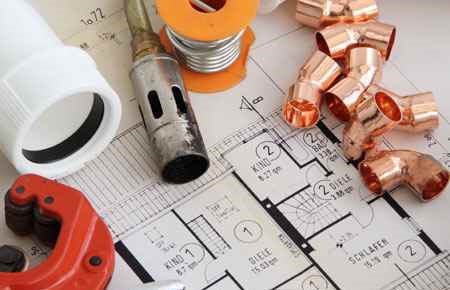
Pipefitting/Pipefitter and Sprinkler Fitter Major
A program that prepares individuals to design, install, and test industrial and commercial piping systems and automatic fire and exposure protection systems.
Includes instruction in water systems, steam systems, heating and cooling systems, lubricating systems, piping materials, installation tools operation and maintenance, valve installation and repair, technical mathematics, blueprint interpretation, and applicable codes and standards.
What can you do with a major/degree in Pipefitting/Pipefitter and Sprinkler Fitter Studies?
A high school diploma or equivalent is typically required to enter the occupation. Most likely training in vocational schools, related on-the-job experience, or an associate degree will be required. Steamfitter and pipefitter occupations usually need one or two years of training involving both on-the-job experience and informal training with experienced workers. A recognized apprenticeship program may be associated with these occupations. Several groups, such as unions and contractor associations, sponsor apprenticeship programs. Welding courses are often required by some pipefitter and steamfitter apprenticeship training programs.
After completing an apprenticeship and becoming licensed at the journey level, steamfitters and pipefitters may advance to become a supervisor or project manager. Some in this job sub-sector choose to start their own business as an independent contractor, which may require additional licensing.
Trade Associations and Professional Organizations in Pipefitting/Pipefitter and Sprinkler Fitter Studies
Professional associations are groups of professionals dedicated to topics in specific fields. Professional associations provide a wealth of online resources, some of which are geared specifically towards students. These organizations typically also host conferences and events, providing great opportunities for learning and networking across your field of interest.
Publications/Magazines Pipefitting/Pipefitter and Sprinkler Fitter Studies